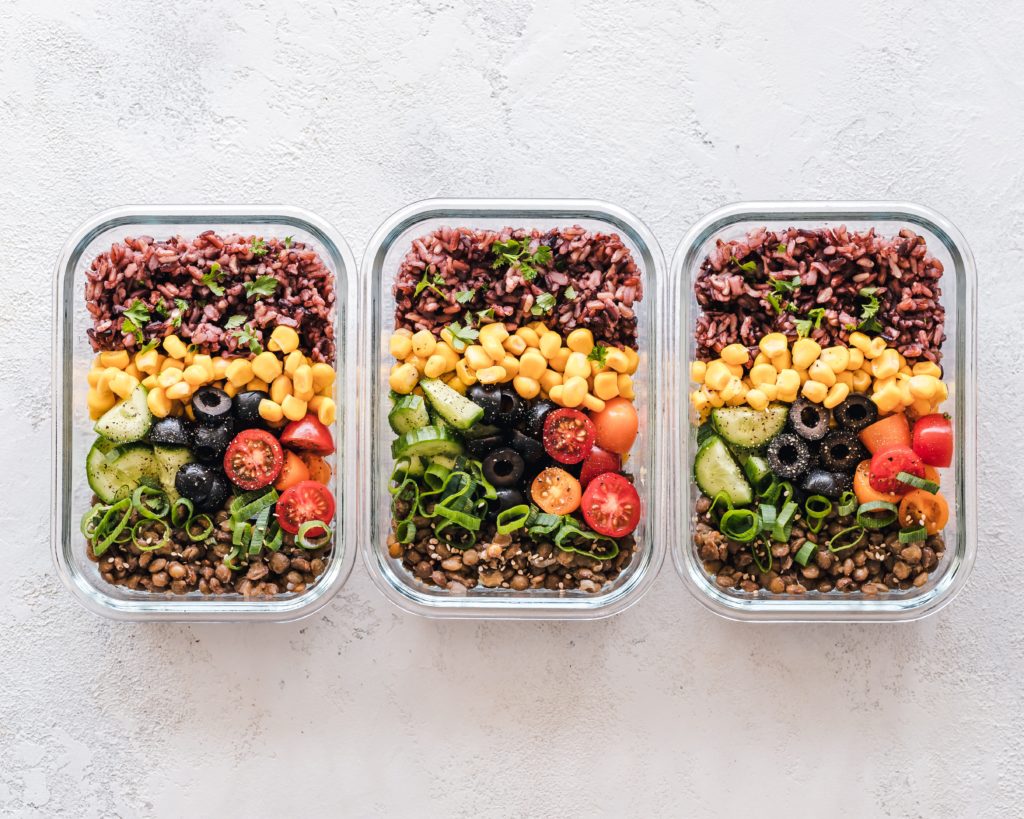
Lack of access to health food is a global health problem. The lack of access to supermarkets, chain grocery stores, and sustainable foods affects minority communities the most. Because of this, many low-income customers are unable to afford healthy food. In addition, crime and poverty can be significant barriers to accessing healthy foods. These issues have led the to a lack in local grocery stores and social programmes, which have reduced access to healthy foods for minority communities.
Lack of healthy food is a worldwide health problem. This is likely to be due to poor socioeconomic status as well as a lack genuine institutional support. In fact, socioeconomic status is associated with multiple health outcomes and maintains its association with disease even when intervening mechanisms change. This means that policymakers must pay attention to the potential of broad societal interventions to increase access to healthy food. This approach might be particularly useful for communities of low socioeconomic status and those with minorities.

Another factor that influences food choices is the accessibility to shops. This is related to both resources and geographical location and is a major determinant of whether people have access to healthy food. Many communities with low incomes and rural areas don't have easy access to markets or grocery stores. Additionally, local food markets may offer lower-nutrient foods, while supermarkets can have a wider range of products. Because of the high cost of healthful foods, increasing access is not enough to increase consumption.
The private sector could play an important role in increasing the availability of healthy food. Lower prices can help companies make healthy foods more accessible. They can also increase distribution and reach vulnerable customers. Access to healthier foods can be made easier by companies making it more affordable. Despite the difficulties associated with food purchase, the private sector can help make it easier for consumers to choose a more healthy diet.
The private sector is often seen as both a problem or a solution. Businesses can increase the availability and affordability of healthy food through distribution and pricing. These companies are responsible for increasing the accessibility to healthy foods in communities. This is because the price of healthy foods isn't as important as how good they taste. These companies can help make it more affordable. The private sector also needs to do its part to improve the condition. For example, by providing more transportation options, food businesses can provide healthier foods in areas where it is not viable to have them.

Healthy food is important, but so is the environment that a person lives in. Healthy eating habits and a healthy environment are key to preventing obesity and other chronic diseases. It cannot be stressed enough how important it is to eat a healthy diet. It is vital to live a healthy and happy life. Healthy food systems will bring benefits to residents of a community. A lack of infrastructure can lead to people becoming less healthy.
FAQ
Why should we have a healthy lifestyle to begin with?
Healthy living can lead to a longer, more fulfilling life. Healthy eating habits, regular exercise, healthy sleep habits, stress management, and good sleep habits can help to prevent heart disease, stroke, diabetes, cancer, and other serious diseases.
A healthy lifestyle will also improve our mental health by helping us cope better with everyday stresses. A healthy lifestyle will help us feel more confident and younger.
How do I get enough vitamins?
You can get most of the daily nutrients you need through your diet. Supplements can be helpful if you are lacking in any one vitamin. A multivitamin supplement can provide all the vitamins you require. Or you can buy individual vitamins from your local drugstore.
If you are concerned about getting enough nutrients, talk to your doctor about what foods contain the best sources of vitamins. Some examples of rich sources of vitamins E and K include dark green leafy vegetables, such as spinach.
If you are not sure how much vitamin you should be consuming, ask your doctor. Based on your medical history, and your current health status, your doctor will recommend the right dosage.
Supplements and herbs can improve immunity
It is possible to boost immune function by using herbs and natural remedies. Examples include ginger, garlic and oregano oils, echinacea, vitamin C, ginkgo loba, and echinacea.
These herbal remedies shouldn't be considered a replacement for medical treatment. Side effects include nausea, diarrhea and stomach cramps, headaches and dizziness.
What is the difference between a calorie or a kilocalorie.
Calories refer to units that are used for measuring the energy in food. Calories are the unit of measurement. One calorie represents the energy required to raise one gram of water's temperature by one degree Celsius.
Kilocalories is another name for calories. Kilocalories are expressed in thousandths (or a calorie). 1000 calories, for example, equals one kilocalorie.
How to measure body fat?
A Body Fat Analyzer (BFA) is the best method to measure bodyfat. These devices are used to determine the percentage of bodyfat in people who desire to lose weight.
Do I need to count calories
You might be asking "What is the best diet?" or "is counting calories necessary?" Well, the answer depends on several factors including your current health status, your personal goals, your preferences, and your overall lifestyle.
The Best Diet - Which One Is Right To You?
The best diet for me depends on my current health status, my personal goals, my preferences, and my overall lifestyle. There are many good and bad diets. Some work well for certain people while others don't. So what do I do? How do I make the right decision?
These are the main questions addressed by this article. It starts with a brief introduction of the different types of diets available today. After that, you will learn about the pros and disadvantages of each type. The final step is to determine which one is right for you.
Let's start by taking a look at the various types of diets.
Diet Types
There are three main types of diets: low fat, high protein, and ketogenic. Let's look at each one briefly.
Low Fat Diets
A low fat diet is a diet that restricts the amount of fats consumed. This is accomplished by decreasing the intake of saturated fats such as butter and cream cheese. and replacing them with unsaturated fats (olive oil, avocados, etc.). A low fat diet is often recommended for those who want to lose weight quickly and easily. This diet can cause constipation, heartburn, and stomach problems. A person may also experience vitamin deficiencies if they don't get enough vitamins.
High Protein Diets
High protein diets are known to restrict carbohydrate intake and promote the consumption of proteins. These diets are more protein-rich than others. These diets are intended to increase muscle mass and reduce calories. However, they might not provide enough nutrition for those who need to eat frequently. They may also be too restrictive and not suitable for everyone.
Ketogenic Diets
Also known as keto diets, ketogenic diets are also called keto diets. They are high on fat but low in carbs and proteins. These foods are popular among athletes and bodybuilders as they allow them to train harder, longer and without becoming tired. You must adhere to all side effects, including fatigue, headaches, nausea and headaches.
What is the best food for me?
Your lifestyle and individual needs will determine the best diet for your body. Consider how much energy and low-calorie foods you consume, as well as whether or not you are a fan of fruits and vegetables.
Intermittent fasting is a good option if you're trying to lose weight. Intermittent Fasting means that you eat only specific meals throughout your day and not three large meals. This approach may prove to be more beneficial than traditional diets that have daily calorie counts.
Intermittent fasting is believed to increase insulin sensitivity. It may also reduce inflammation. This may lead to a decrease in diabetes risk and blood sugar levels. Other research suggests that intermittent fasting may promote fat loss and improve overall body composition.
Statistics
- WHO recommends reducing saturated fats to less than 10% of total energy intake; reducing trans-fats to less than 1% of total energy intake; and replacing both saturated fats and trans-fats to unsaturated fats. (who.int)
- The Dietary Guidelines for Americans recommend keeping added sugar intake below 10% of your daily calorie intake, while the World Health Organization recommends slashing added sugars to 5% or less of your daily calories for optimal health (59Trusted (healthline.com)
- According to the 2020 Dietary Guidelines for Americans, a balanced diet high in fruits and vegetables, lean protein, low-fat dairy and whole grains is needed for optimal energy. (mayoclinichealthsystem.org)
- This article received 11 testimonials and 86% of readers who voted found it helpful, earning it our reader-approved status. (wikihow.com)
External Links
How To
27 Steps for a healthy lifestyle even if your family buys junk food
Cooking at home is the best way to eat well. But, it can be hard to make healthy meals because many people don't know how. This article will show you how to make healthier eating choices at restaurants.
-
Find restaurants that offer healthy options.
-
Before you order any meat dishes, make sure to order salads or vegetables.
-
Ask for sauces without added sugar.
-
Avoid fried food.
-
Ask for grilled meats, not fried.
-
Do not order dessert unless you really need it.
-
It is important to have something more after dinner.
-
Take your time and chew slowly.
-
Eat water.
-
Do not skip breakfast or lunch.
-
Fruits and vegetables are a great addition to every meal.
-
Consider drinking milk instead of soda.
-
Try to stay away from sugary drinks.
-
Reduce the salt content of your diet.
-
Try to limit your frequent visits to fast-food restaurants.
-
If temptation is too strong for you, invite someone to be your friend.
-
You should not allow your kids to watch too many TV programs.
-
Keep the television off during meals.
-
Do not drink energy drinks.
-
Take regular breaks from the office.
-
Exercise early in the morning.
-
Move every day.
-
Start small and increase your knowledge slowly.
-
Set realistic goals.
-
Be patient.
-
Find time to exercise even if you don't feel like it.
-
Positive thinking is important.